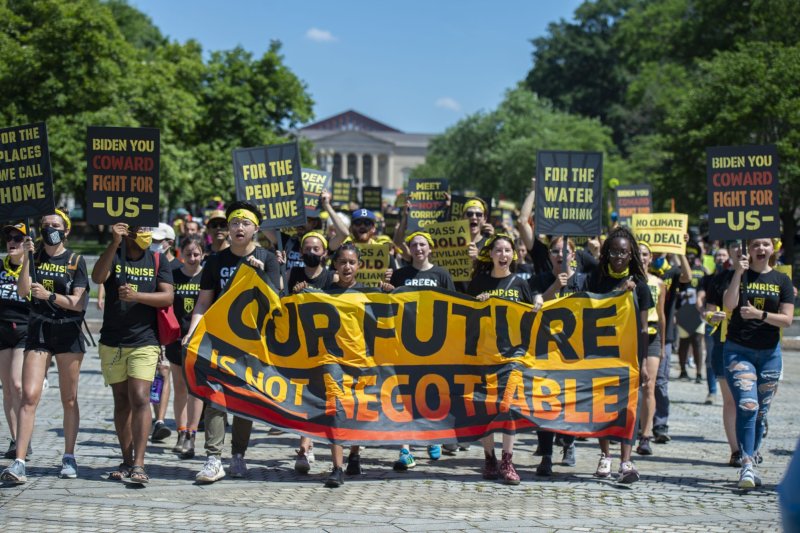By Mark Puleo, Accuweather.com
It's hotter than it's ever been before in the Pacific Northwest and you'll have to excuse the locals for not being totally prepared over the weekend. In a region where many households aren't equipped with air conditioning, temperatures topped 95 degrees Fahrenheit, then 100, then 105 F in what has become the most menacing heat wave in Washington history.
A week ahead of Independence Day, nature's early barbecue celebration stuck the Northwest directly into the coals.
In Seattle, residents had never experienced heat the likes of which enveloped the city Sunday. Temperatures in the Emerald City topped out at 104 degrees F, a new all-time high for a place that's more commonly thought of for its rain than its heat. Even at its coolest, the temperature never dropped below 73 F, a record-high minimum for Seattle.

Roads in Everson, Washington, were forced to close due to roads buckling under the record-breaking heat. (Twitter/@wspd7pio)
In Everson, Washington, located about 100 miles north of Seattle, the heat proved so extreme that roads and sidewalks buckled. State officers shared photos of the cracked roadways, which rendered the streets unsafe and caused detours.
In Yakima, located in the southeastern portion of the state, other Twitter users shared photos of sidewalks buckling under the heat and popping out of the ground.
Dr. Kristie Ebi, a professor at the University of Washington, told AccuWeather National Reporter Bill Wadell that she was particularly concerned for high-risk residents of the area, such as the elderly.
"We're well under 50 of people who have access to air conditioning," she said. "I was quite surprised a couple of years ago when we had a heat wave...I was the only one who had air conditioning, no one else did."
Before Sunday's rotisserie, Seattle's prior record high of 103 F was set on July 29, 2009, the same day on which high-temperature records were also set in Olympia and Shelton. Both of those cities also had all-time records fall on Sunday, too, with Olympia reaching 105 and Shelton maxing out at 107, according to the National Weather Service.
The brutal heat ushered residents indoors and shuttered businesses as officials urged people to stay out of the sun's wrath.
Kevin Darras, of IAMDARRAS, sells custom-made T-shirts at Seattle's famed Pike Place Market and on Sunday told Wadell that the weather made a direct impact on his sales.
"The crowds are here, but they're dissipating early. So we have to get here, get set up, get comfortable and try to make some sales," Darras said. "It's definitely affecting sales -- probably cut in half. Still lucky to be down here and enjoying the weather. Even if it's hot, we're staying cool."
At its peak broil, the mercury in thermometers even touched the 115 mark in Pasco, Washington, on Sunday. On Monday, Portland, Oregon, saw temperatures reach 115 as well -- the third consecutive day the city has set a new all-time record high.
That kind of heat is enough to make any visiting tourists question their vacationing decisions. Eden Marcus, visiting Seattle from Chicago, told Wadell that increased amounts of water and sunscreen have aided in saving the trip.

"It's crazy hot. Right now it's breezy but when you're standing still it's insane to be outside for more than a few minutes," he said.
But unlike many others in the city, Marcus' stay includes air conditioning. For residents, such as Sheri Grittman, the heat has been severe enough to consider moving to another state.
Grittman, her husband and their two cats became full-time RVers four years ago, she told Wadell, and the mobile homes one air-conditioning unit is certainly not doing the trick.
"Portland gets triple digits, where I'm from, but not up here, it's always about 10 degrees cooler always from Portland. Very abnormal," she said.
The heat proved daunting enough for Grittman that she even told Wadell on Sunday that she was looking forward to returning to work after the weekend for the sake of air conditioning.
"I'm gonna love work," she exclaimed. "It's Monday and I'm gonna love work!"
The heat wave's wrath began in earnest last week in Washington before spiking over the weekend. Farther north, high-temperature recordings of 116 F in British Columbia broke the all-time record for the highest temperature ever recorded in Canada.
In Oregon, it was in Eugene where the heat may have the most notable impact, forcing a temporary halt to the U.S. Olympic Track and Field Trials on Sunday. Athletes were forced to wait for the brunt of heat to calm down before competition could restart.
Keep checking back on AccuWeather.com










